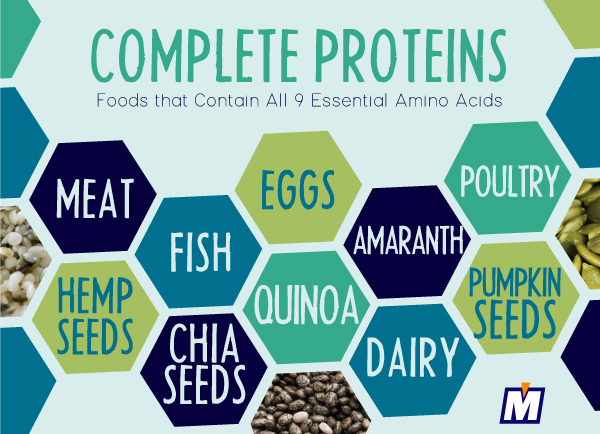This blog was originally published on 9/15/2016 but the information is still incredibly useful! You can find the original here: pacmoore.com/plant-animal-proteins.
The number of food products on the market which contain added protein is quickly growing. Most of these foods use protein derived from plant sources, but some of us worry that plants may not provide the same protein as animal foods. There are some differences between plant protein and animal protein, but that doesn’t mean one is always better than the other.
THE ESSENTIALS OF PROTEIN
Protein provides structure to muscles and other tissues of the body. All proteins are made from various configurations of amino acids, whether the protein comes from an animal or plant. There are 20 amino acids, according to the National Institutes of Health.

The human body can manufacture some, but not all, of the amino acids it needs. Scientists classify amino acids based on whether the body can make them. Non-essential amino acids are those which our bodies can make, while essential amino acids are those which it cannot make. We must get these essential nutrients from the food we eat. Nine of the twenty amino acids are classified as essential.
SO WHERE’S THE COMPLETE PROTEIN?
Animal protein sources, such as meat, fish, poultry, eggs and dairy contain all nine essential amino acids, so scientists consider them “complete” sources of protein. A few foods from plant sources, such as amaranth, quinoa, pumpkin seeds, chia seeds and hemp seeds, provide complete protein. Very few plant sources contain a balanced amount of each essential amino acid, so it’s important to eat a balance of these nutrients each day. Fortunately, many plant foods complement one another’s amino acids. This means, combining plant-protein sources can provide the same amino acids and benefits as animal protein sources. Simply eating peanut butter with whole-wheat crackers, for example, creates a snack that can deliver the same complete protein as a meal made from animal protein.
ADDING PROTEIN TO IMPROVE CLASSIC FOODS
We at PacMoore are excited about the possibilities of protein. Food production in the world must increase dramatically in order to feed the growing population. This means we should become smarter and more efficient about what we eat. Deriving protein supplements to add to our classic foods is a great way to increase nutrition. On our spray dryer, we’ve been able to help our customers create innovative new protein powders from dairy, plants, and even insects. In the end, the body does not distinguish between plant, insect, and animal protein as long as it gets sufficient amounts of the right amino acids.
SOURCES
http://www.ncbi.nlm.nih.gov/pmc/articles/PMC3905294/
https://medlineplus.gov/ency/article/002222.htm
